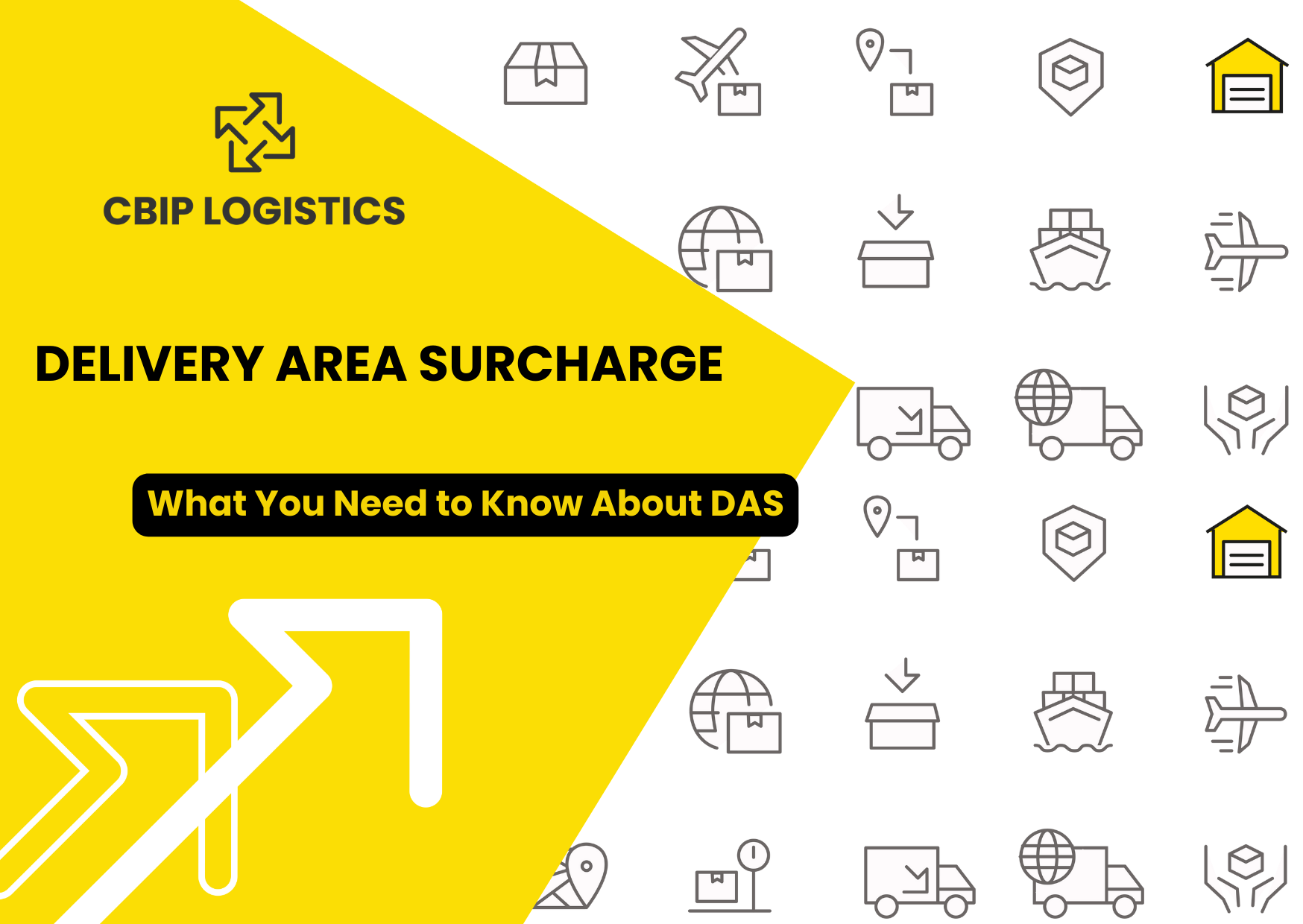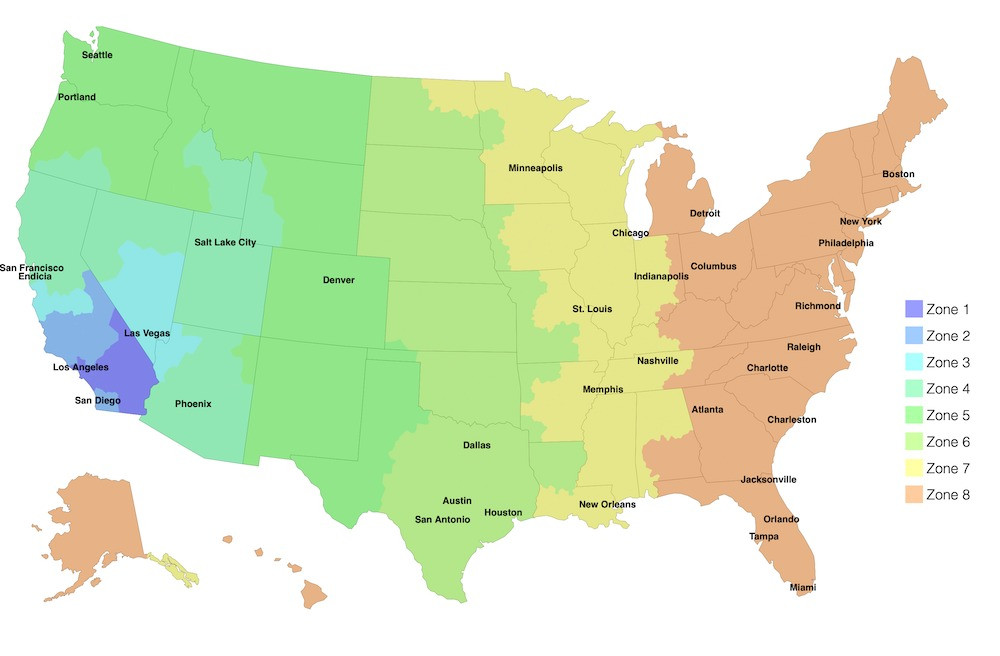US Delivery Area Surcharges: What DAS Fees Are and How to Reduce Them

If you are an e-commerce retailer shipping in the United States, one of the main surcharges you will have to pay is the DAS, AKA Delivery Area Surcharge.
These surcharges are levied on shipments based on zip code; the national carriers decide which zipcodes are remote or sparsely populated enough to merit an extra fee, and that fee is the delivery area surcharge.
On average, DAS makes up an estimated 20% of the surcharge fees you find on your shipping carrier invoice, so it’s important to know how it works and how you can manipulate it in your favor.

Right now more than ever, it’s important to understand DAS and how it affects your retail business.
This coming year in 2024, UPS is planning to add 2.75 million people to the surcharge eligibility area, adding to a list of zip codes that include addresses of over 3 million Americans.
You may not want to focus on all of the little charges on your shipping invoice, but those charges should not be ignored. Depending on how often you ship to remote areas, those charges could have a serious impact on your bottom line.
In this article, we’ll run through
- How DAS is calculated
- Where to find out rates and zip codes affected for 2024
- What you can do to lower your DAS fee burden
Read About CBIP's Adaptable 4PL Logistics Services
How is the delivery area surcharge calculated?
Delivery area surcharge, or DAS for short, is divided into three categories.
- Standard surcharge - typically applies to suburban areas
- Extended area surcharge - remote regions where the population is more dispersed
- Remote area surcharge - within Alaska and Hawaii
Typically, these charges will show up on your invoice as DAS Comm, Delivery Area Surcharge, DAS Resi, or some similar variation on that.
How to figure out your DAS fees
Some estimates show that as much as 29% of the US population will be living in a DAS zip code in 2024.
Knowing how to estimate these charges can help you budget effectively for the coming year. Here’s where to find DAS rate info for each of the major US carriers.
FedEx
The best way to figure out your shipping rates is to use the FedEx online calculator. However, calculators like this are not able to show you how much shipping will cost months down the line.
In order to estimate your shipping surcharges for the coming year 2024, you will need to check out this schedule for 2024 area surcharge changes
.UPS
Similar to FedEx, UPS rates can be calculated with their online calculator, but upcoming rate changes can be found in the UPS revised rate schedule
.USPS
While the United States Postal Service does not apply surcharge fees in the same way that other private national carriers do, there are added fees for shipping depending on where you are shipping.
USPS uses something called zone-based pricing. In this system, there are 9 separate zones, 8 in the contiguous United States, and 1 to include the outlying territories.
The zones change depending on where you are shipping from. For example, this is a map of the different zones for a shipper located in LA.
The lower number zones will result in cheaper shipping rates, as they are located nearer to the shipper.
How can I get a better rate?
Delivery area surcharges are going to hit e-commerce retailers harder this coming year, so now is the time to prepare. Here are a few ways to lower your DAS fees in 2024.
1. Ask for a discount
Lower rates can be as simple as asking your carrier for a discounted rate. Some consultants suggest that you go for anywhere between a 25-50% surcharge discount.
However, whether or not you will be able to get a discount likely depends on your shipping volume. Smaller shippers may be out of luck unless you are working with a provider who works with larger volumes and can help you negotiate a better rate.
However, smaller retailers can also benefit from discounts if you can show that DAS fees are eating into your profits as a small business. You need to make sure that you are actually seeing significant surcharges before you ask for a discount, so understanding your shipping invoice is crucial.
Related: 5 Easy Ways for E-Commerce Retailers to Save Money on Shipping
2. Opt for regional carriers
Find yourself shipping to remote locations often?
Instead of paying the surcharge fee, hire a regional carrier in your target area to do the last-mile delivery.
How do you do this?
First, establish which remote areas you ship to often, AKA where you are paying the most DAS fees. Next, simply look up local carriers in that region. Have the national carrier take your goods to a nearby warehouse, and hire the local carrier to transport them the rest of the way.
It’s an extra step, but worthwhile to make sure you don’t need to worry about extra shipping charges again.
3. Budget charges and pass them on to the customer
Swallowing surcharges can be expensive, particularly if you are a smaller retailer. Protect your business by planning: Create a budget for the surcharges you expect to see for that year, then pass those costs on to your customers.
Although hiking up pricing is not exactly attractive, spreading out those surcharge rates among your customers is unlikely to incur a large price hike. Swallowing the cost on your own could take an impactful chunk out of your bottom line.
We recommend you do some research before hiking up your prices.
For instance: Are your customers extremely cost-conscious, or would a modest increase likely not phase them? Based on projected delivery area surcharge fees, how much would you have to raise prices to cover the cost?
If the price hike is modest and your customers are not too cost-sensitive, building in your surcharge costs to the price of the item might be something to consider.
4. Work with a fourth-party logistics partner
The big issue with surcharges is that many retailers are too busy worrying about other aspects of their business to check on the little added charges, on the rate-hikes. You should be focusing on the big picture for your business — yet, the little things add up.
That’s exactly why it can be so helpful to hire a logistics partner who doesn't just tend to one or two aspects of your logistics, but manages it as a whole. That 4PL will take the time to get to know your business through and through, figuring out where you are spending money you shouldn’t be, and then they’ll go out and hunt for better rates for you.
At CBIP Logistics, we are dedicated to researching to get our clients the best rates possible. As a global 4PL, we work with both the big national carriers like FedEx and UPS and the smaller regional carriers. If the national carriers won't grant you a discount, we will hire one of our local carriers to transport your goods to save you money.
If you are struggling to understand the details of your shipping costs and fees — please don’t worry, you aren’t alone. Give us a call, and we can talk about how we can help you save money and optimize your US shipping this year.







